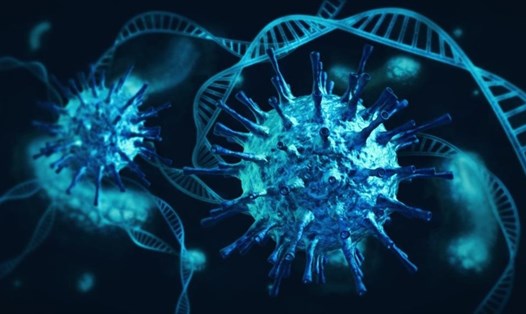Italy's ANSA news agency reported that the research team at Bambino Gesu University in Rome, Italy, conducted research and provided the first illustrative image comparing the variations of the most dangerous Omicron variety today with the Delta variety. Accordingly, the new super variation may have adapted to the human body, but it is not certain to be more dangerous than the Delta variation.
Looking at the image, you can see the dotitable protein structure of the Omicron variety on the right and of the Delta variety on the left. Although the Delta (left red protein) mutation is diverse compared to the original SARS-CoV-2 virus strain, the Omicron (right protein) mutation is much more severe than Delta and concentrates in the area that interacts directly with human cells. The rate of sudden decline in orange, yellow, green and finally gray areas has not changed at all.
According to the studys authors, this does not mean that Omicron variants are more dangerous, but simply that the virus has created a variation that is more adapted to humans.
The scientists noted: Conducting more in-depth studies will tell us whether this adaptation is neutral, less dangerous or more dangerous.
Previously, on November 26, the World Health Organization (WHO) designated the B 1. 1,529 variety as a " worrisome variety" and named it Omicron. The WHO said the new variants have a large number of breakthroughs, some of which are worrying. According to the WHO, preliminary evidence shows that the risk of re-infection with Omicron strains is increased compared to other worrying strains.
Data on the new SARS-CoV-2 candidate, B 1.00.529, identified in southern Africa, was released to the GISAID international database on November 22.
WHO has expressed concern about reports from South Africa about rapid spread in the densely populated Gauteng province, which could show the high transmission potential of this virus strain. Several countries have suspended aviation services with South Africa and other countries in southern Africa.










